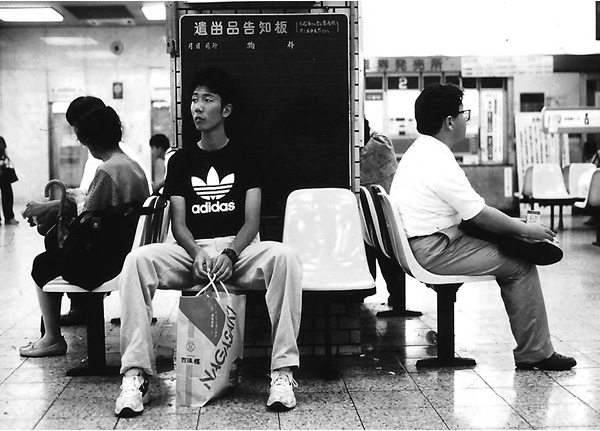
LOITERING WITH INTENT: TWELVE HOURS IN NAGASAKI BUS STATION
first performed on August 9, 2015
Bus station in Downtown Nagasaki, Japan
performed once in 2015
MICHAEL BRAMWELL
Cary, North Carolina
593319223M593319223i593319223c593319223h593319223a593319223e593319223l593319223B593319223r593319223a593319223m593319223w593319223e593319223l593319223l593319223459331922395933192233593319223@593319223g593319223m593319223a593319223i593319223l593319223.593319223c593319223o593319223m
MichaeljBramwell.com
LOITERING WITH INTENT: TWELVE HOURS IN NAGASAKI BUS STATION
MICHAEL BRAMWELL
But perhaps the great work of art has less importance in itself than in the ordeal it demands of a man and the opportunity it provides him to overcome his phantoms and approach a little closer to his naked reality.
— Albert Camus
“Loitering With Intent: Twelve Hours in Nagasaki Bus Station” is among other things, practice-based research that uses performative and photographic methodologies to investigate world-historical tragedy. It works in much the same way as Building Sweeps-Harlem did to examine catastrophes of urban decay and apathy by constructing cultural paradigms of care and concern for others. The conceptual approach to this work is simple: take a plane to Japan and set up a camera on a tripod in a fixed location in the waiting room of a mundane bus station in downtown Nagasaki; next, make one photograph each hour on the hour, for twelve consecutive hours, before catching a flight back to Harlem.
The question now becomes, how can a series of performance photographs constitute an investigation of historical tragedy? Answers become clearer if we frame the work as cultural forensics, a kind of evidence that returns us to the scene of a crime against humanity. A place where the historical memory is re-constructed in the present context of twenty-first century Japan in order to generate consciousness, empathy, and meaningful expiation; a space between past and future.
On August 9, 1945 citizens of the United States, under direction of their President Harry S. Truman, dropped a plutonium-type nuclear weapon on the people of Nagasaki, distinguishing themselves as the only people in the history of the world to use nuclear weapons against other people. The initial blast and firestorm that followed vaporized between 39,000-80,000 citizens, with others slowly dying from burns and radiation poisoning over the years. Genetic effects are prevalent and have inter-generational consequence so devastating that Japanese people had to invent a word to describe these people. They called them: Hibakusha, or “explosion-affected people.” This is a man-made tragedy that affects generations of lives.
Historical memory and time are framed conceptually lest we forget. Twelve hours represents a half-time division of days, where history pauses before it intersects with the future; where time perpetuates itself in continuity. The bus station is a physical metaphor for this space, between the past of where travelers are coming from and the future destination of where they hope to be.